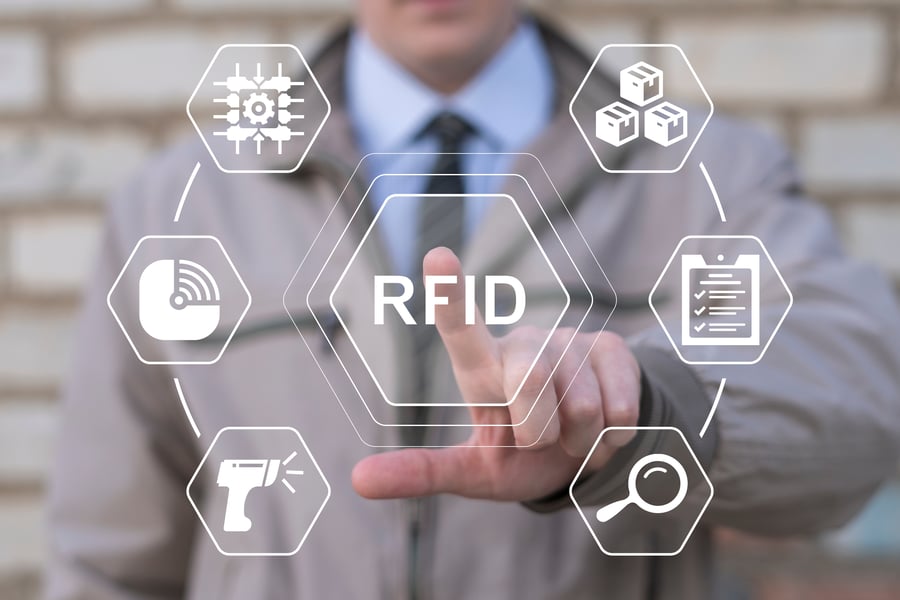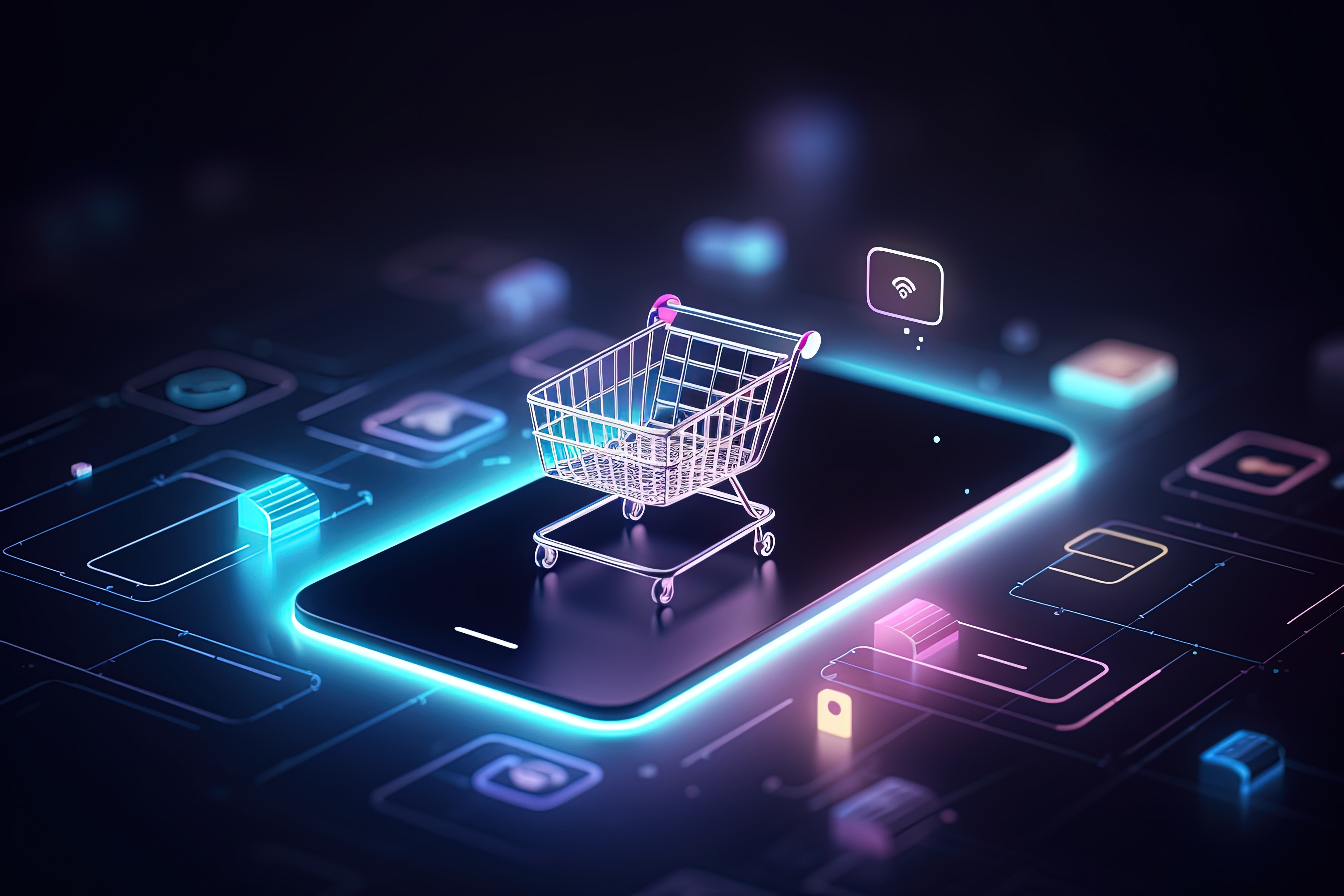The Ultimate Guide to RFID in Retail: How Leading Retailers Are Using RFID for Inventory and Loss Prevention
Retail General
Retail industry leaders across sectors are embracing RFID technology to transform their inventory management and loss prevention capabilities. Big box retailers like Walmart, Target, and Macy's; apparel giants including Nike, Adidas, Levi's, Zara, and H&M; and specialty retailers such as Lululemon and Decathlon are all leveraging RFID to gain competitive advantages.
While RFID technology has existed since WWII and saw initial retail applications in the 1990s, early versions were costly and limited in functionality. The rise of e-commerce and omnichannel retail created new demands for inventory accuracy, driving renewed interest. COVID-19 further accelerated adoption, with RFID helping retailers fulfill the sudden spike in online orders.
Today, RFID has moved from experimental technology to essential retail infrastructure. According to a recent Accenture report, 93% of North American retailers are using RFID technology in some capacity as of late 2024, with the global RFID market projected to grow from $17.12 billion in 2025 to $37.71 billion by 2032.
This guide explores why RFID has reached this tipping point of adoption. We'll examine what RFID is, how it works, and the tangible benefits it offers for inventory management and loss prevention across various retail sectors.
What is RFID and How Does It Work?
Defining RFID
Radio Frequency Identification (RFID) is a wireless technology that uses radio waves to automatically identify and track tags attached to objects. In retail, this means every item equipped with an RFID tag can be tracked and monitored in real time—without the need for manual scanning or line-of-sight visibility.
In retail applications, RFID systems consist of three primary components:
- RFID Tags: Small electronic devices containing a microchip and antenna attached to merchandise, carrying unique identification data.
- RFID Readers: Devices that emit radio waves to receive and read the information from nearby tags.
- Data Processing Software/Middleware: Software that processes the data collected from tags and integrates it with inventory management systems.
When an RFID reader sends out radio signals, nearby RFID tags respond by transmitting their stored information back to the reader. This allows for simultaneous identification of multiple items without requiring line-of-sight scanning. Unlike traditional barcodes, which require manual scanning and can only provide limited data, RFID enables automatic, continuous data collection—even as items move through your supply chain, backrooms, and sales floors.
Passive vs. Active RFID Tags
RFID tags generally fall into two categories. Passive RFID Tags rely on the energy from the reader to transmit data. They’re cost-effective and ideal for tracking high volumes of lower-value goods, such as apparel or packaged groceries. Active RFID Tags have their own power source and continuously transmit data. These are typically used for tracking high-value items or assets over long distances.
Passive RFID Tags:
- Do not have their own power source
- Powered by the electromagnetic energy transmitted from RFID readers
- Less expensive (typically $0.10-$0.50 per tag)
- Shorter read range (up to 40 feet)
- Most commonly used in retail applications
Active RFID Tags:
- Contain their own power source (battery)
- Can transmit signals independently
- More expensive (typically $5-$50 per tag)
- Longer read range (up to 300 feet or more)
- Used primarily for tracking high-value assets or in complex supply chain applications
RFID vs. Traditional Barcodes
|
Feature |
RFID |
Barcodes |
|
Line of Sight |
Not required |
Required |
|
Scanning Efficiency |
Very fast; multiple items at once |
Slow; scanned one at a time |
|
Read/Write Capability |
Yes |
No (read-only) |
|
Tag Durability |
High (resists moisture, abrasion, etc.) |
Low (easily damaged) |
|
Item-Level Tracking |
Yes |
Limited |
|
Data Capacity |
High (can store detailed item info) |
Low (basic SKU or ID) |
|
Read Range |
Several meters |
A few inches |
|
Automation Level |
Automatic scanning, minimal labor |
Manual scanning, more labor |
|
Implementation Cost |
Higher upfront costs |
Lower upfront costs |
|
Cost per Tag |
Higher |
Very low |
|
Common Use Cases |
Inventory, loss prevention, asset tracking |
Basic inventory control |
While barcodes have served retail well for decades, they require each item to be individually scanned with direct line-of-sight. RFID, by contrast, can identify hundreds of items simultaneously without direct visibility, making inventory processes significantly faster and more accurate.
RFID doesn’t just tell you if a product is in stock—it tells you exactly where it is, how it got there, and if something’s gone missing. For loss prevention and inventory management teams, that level of precision can make all the difference.
The Business Case for RFID in Retail
Implementing RFID technology represents a significant investment, but retailers across various sectors are finding that the benefits far outweigh the costs. From improving inventory accuracy to reducing shrink, RFID provides a level of visibility and control that traditional methods simply can’t match.
Inventory Accuracy
An oft-cited statistic from the Auburn RFID Lab claims that relying on traditional inventory methods, such as manual counts and barcode systems, typically achieve accuracy rates of 65-75%, while RFID implementation can boost accuracy (one study claims up to 99%). By providing real-time, item-level tracking, retailers gain data on what products are available and where.
Advocates claim that with the precise inventory counts enabled by RFID, retailers can reduce costly safety stock levels, prevent overstocks and stock outs, improve demand forecasting with more accurate historical inventory data, and improve omnichannel fulfillment with accurate location data.
Shrink Reduction
As Loss Prevention professionals know, minimizing shrink is the name of the game. According to the last published statistics by the National Retail Foundation in 2023, shrink costs retailers in the US over $112 billion annually.
RFID helps combat shrink through:
- Easier detection of missing items: Regular inventory scans quickly identify when and where items disappear.
- Theft deterrence: Visible RFID tags and portals serve as deterrents to would-be thieves.
- Process improvement: Identifying patterns of loss helps retailers address systemic issues in handling and transfers.
Operational Efficiency
Manual inventory counts and barcode scanning are time-consuming and error-prone. RFID dramatically streamlines labor-intensive processes:
- Faster inventory counts: What once took days can be completed in hours or even minutes.
- Reduced labor costs: Less time spent on manual counts means staff can focus on customer service.
- Improved receiving processes: Incoming shipments can be verified instantly without opening boxes.
- Enhanced replenishment: Automated alerts trigger restocking when inventory levels fall below thresholds.
Customer Experience
When shelves are empty or online orders can’t be fulfilled, customer satisfaction suffers. RFID helps retailers deliver on customer expectations:
- Reduced stockouts: Better inventory visibility means products are available when customers want them.
- Omnichannel fulfillment: Accurate store-level inventory enables buy online, pick up in-store (BOPIS) and ship-from-store capabilities.
- Personalized experiences: Item-level tracking supports personalized recommendations and services.
- Faster checkout: RFID can enable quicker checkout processes, reducing wait times.
Common RFID Use Cases Across Retail Sectors
RFID technology is versatile enough to benefit virtually any retail category, but implementation strategies vary based on specific challenges and objectives.
Apparel and Fashion Retailers
The apparel sector has been among the earliest and most enthusiastic adopters of RFID technology, with good reason:
- Item-level tracking: With numerous size and color combinations, apparel retailers struggle with inventory accuracy. RFID provides precise visibility into exactly which variants are available.
- Fitting room insights: RFID-enabled fitting rooms track which items are tried on but not purchased, providing valuable merchandising data.
- Theft prevention: High-end apparel retailers use RFID to track expensive items and detect when they leave the store without being purchased.
- Authentication: For luxury brands, RFID helps verify product authenticity and combat counterfeiting.
Zara stands out as one of the most comprehensive RFID implementers in the apparel sector. Since 2014, the company has systematically deployed RFID across its global operations, with the technology now integrated into every product they sell. Their system enables twice-weekly inventory checks that take just hours rather than days, supporting their aggressive same-day fulfillment strategy.
However, Zara's implementation also illustrates the challenges retailers can face when deploying RFID. In 2023, the company faced setbacks when attempting to replace traditional hard security tags with embedded RFID chips designed to serve both inventory and anti-theft purposes. The implementation was delayed because shoplifters were able to easily identify and remove the new security tags during initial tests, leading the company to explore alternative approaches, including using specialized RFID threads sewn into garment seams to make removal more difficult.
Grocery and Supermarkets
While initially slower to adopt RFID due to cost concerns and challenges with liquid products, grocers are finding valuable applications:
- Fresh food tracking: RFID helps monitor perishable items through the supply chain, ensuring freshness and reducing waste.
- Cold chain monitoring: RFID sensors can track temperature conditions during transport and storage.
- Expiration date management: Smart shelves with RFID readers can identify soon-to-expire products for discount or removal.
- Automated checkout: Some grocers are exploring RFID as part of "grab and go" checkout-free experiences.
Kroger, one of America's largest supermarket chains, is implementing RFID technology across its fresh departments as part of its broader Zero Hunger | Zero Waste initiative. In late 2024, the company began rolling out RFID-embedded labels in its bakery department, with plans to expand to other perishable categories. The implementation enables automated inventory counts that previously required manual labor, improving visibility while reducing food waste and freeing staff to focus on customer service, highlighting growing recognition of RFID's potential value in managing perishable inventory, particularly for high-spoilage categories with complex rotation requirements.
Big-Box Retailers
Large-format retailers with massive SKU counts find RFID particularly valuable for:
- Supply chain visibility: Tracking pallets and cases from distribution center to sales floor.
- Backroom management: Quickly identifying when products are in the backroom but not on shelves.
- Seasonal merchandise management: Efficiently handling large volumes of seasonal items.
- Returns processing: Streamlining the receiving and restocking of returned merchandise.
Big box stores like Walmart pioneered retail RFID adoption in the early 2000s with supplier mandates. Walmart continues to expand its RFID implementation, announcing in 2022 that suppliers must apply RFID tags to items across home, entertainment, and hardline departments. While the retailer has experimented with RFID-based checkout verification for its scan-and-go system, not all pilots have proven successful, highlighting that implementation requires careful planning and clear use cases.
French sporting goods retailer Decathlon has one of the most comprehensive RFID implementations globally, with 100% of its products RFID-tagged. Their system enables rapid inventory counts (reducing a 40-hour process to just 1.5 hours) while maintaining 99% accuracy. Decathlon has also revolutionized the checkout experience with RFID-enabled payment stations where customers simply place their items on a reader surface for instant scanning. This dual focus on inventory and customer experience demonstrates how RFID can transform both operational efficiency and customer service when fully embraced across an organization.
Electronics and High-Value Goods
Retailers of small, expensive items have unique challenges that RFID addresses:
- Loss prevention: Real-time tracking of high-value items helps prevent both customer and employee theft.
- Display security: RFID-enabled sensors can trigger alerts when display items are removed or tampered with.
- Warranty management: RFID tags store purchase information for seamless warranty service.
- Product authentication: RFID helps verify that high-value electronics are genuine, not counterfeit.
RFID and Loss Prevention: Seeing and Stopping Shrink Before It Happens
While improved inventory management is often the primary driver for RFID adoption, the technology offers powerful capabilities for loss prevention teams seeking to reduce shrink proactively. But how does RFID relate to existing technologies, such as Electronic Article Surveillance (EAS) systems, that many retailers already have in place?
RFID and EAS: Complementary Technologies
Traditional EAS systems use electromagnetic, acousto-magnetic, or radio frequency tags that simply signal their presence when passing through detection gates. These systems can only tell a retailer if a tagged item is leaving the store, not which specific item it is. While effective as theft deterrents, they provide no inventory visibility or product-specific information.
RFID, in contrast, provides item-level identification, not just detection. This fundamental difference explains why many retailers initially maintained separate systems—EAS for theft prevention and RFID for inventory management. However, the retail industry is now witnessing significant convergence between these technologies.
The trend toward integrating RFID with EAS is accelerating, with retailers adopting hybrid systems that combine the inventory-tracking capabilities of RFID with the theft deterrence of traditional EAS. This integration allows for smoother technology transitions and leverages the strengths of both systems. Major solution providers now offer dual-technology tags and inlays that combine UHF RFID and EAS in a single product, making it easier for retailers to deploy hybrid solutions at scale.
Apparel and fashion accessories retailers are among the most significant adopters of dual EAS/RFID systems, driven by the need for high inventory accuracy and strong loss prevention. These retailers typically implement hybrid solutions through one of three approaches:
- Dual-technology hard tags: Tags containing both RFID and EAS technology that are removed at checkout
- RFID-enabled EAS pedestals: Traditional EAS gates that also read RFID information when tagged items pass through
- Software integration: Systems that use RFID for both inventory and security functions, triggering alerts when items with active RFID tags exit without proper deactivation
For retailers considering RFID implementation, the migration path typically includes maintaining existing EAS infrastructure while gradually introducing RFID. Many start with high-value or high-shrink departments before expanding to full store coverage. This phased approach allows retailers to develop expertise, measure ROI, and refine processes before committing to a complete system transition.
Detecting Inventory Movement Anomalies
RFID systems create a digital footprint for every tagged item, allowing retailers to track movement patterns that may indicate theft:
- Unusual product movement: When items move in suspicious patterns or quantities, alerts can be triggered.
- Exit monitoring: RFID portals at store exits can detect unpaid merchandise leaving the premises.
- After-hours movement: Any item movement detected outside of business hours can indicate internal theft.
These capabilities can help loss prevention teams in shifting from reactive investigation to proactive prevention, addressing potential issues before significant losses occur.
Common Shrink Scenarios RFID Can Help Prevent
RFID technology can be helpful for LP teams in combating several common sources of retail shrink:
- Internal theft: When employees know their actions are being tracked at the item level, opportunistic theft decreases significantly.
- Organized retail crime: RFID helps identify patterns consistent with organized theft rings, such as the simultaneous disappearance of multiple high-value items.
- Process errors: Many inventory discrepancies stem from receiving errors, miscounts, or improper transfers between locations. RFID provides validation at each step, reducing these costly mistakes.
- Vendor fraud: By verifying exactly what arrives in each shipment, retailers can ensure they're receiving what they've paid for.
However, LP teams need the right loss prevention analytics tools to be able to put RFID data to use. Below, we explore more about the data infrastructure LP teams need to properly leverage RFID data.
Zone-Based Tracking and Shrink Hotspots
One of RFID's most powerful loss prevention applications is the ability to create virtual zones within a store:
- Department-level monitoring: Retailers can identify which departments experience the highest rates of shrink.
- Fixture-specific tracking: Certain fixtures or display types may be more vulnerable to theft.
- Traffic pattern analysis: Correlating customer traffic patterns with inventory loss helps identify high-risk times and locations.
- Employee presence correlation: Some sophisticated systems can even correlate which employees are present during periods of elevated loss.
This granular visibility allows retailers to deploy security resources and loss prevention measures precisely where they're most needed, maximizing their effectiveness.
Is RFID Right for Your Business? Key Considerations Before Adopting
Despite its promise, RFID adoption in retail has experienced a series of fits and starts over the past two decades. Early efforts—most notably Walmart’s 2003 mandate for suppliers to implement RFID—faced significant pushback due to the high costs of tags and readers, limited technology maturity, and the complexity of integrating RFID with legacy systems. Many retailers also discovered that the promised ROI was difficult to realize without significant operational changes, such as overhauling supply chain processes and investing in staff training. As a result, initial enthusiasm waned, and large-scale rollouts stalled.
Even today, hesitations remain. For some retailers, especially those with low-margin products or fast-moving consumer goods, the cost of item-level tagging still outweighs perceived benefits. There are also concerns about data overload—having granular inventory data is only valuable if organizations have the tools and processes to act on it effectively. Privacy considerations, particularly around tracking consumer behavior, have added further complexity. In sectors like fashion and high-value electronics, where inventory accuracy directly impacts profitability, RFID has gained more traction. But for many others, the perceived complexity, upfront investment, and uncertain ROI continue to make RFID adoption a lower priority.
While RFID offers compelling benefits, successful implementation requires careful consideration of several factors:
Cost Considerations
The total cost of RFID implementation includes:
- Tags: $0.10-$0.50 per item for passive tags (costs continue to decrease annually)
- Hardware: Readers, antennas, and portals ($500-$3,000 per reader)
- Software: Middleware and integration with existing systems
- Implementation: Installation, configuration, and training
- Maintenance: Ongoing system maintenance and support
For many retailers, the key question is whether the benefits justify these costs. The business case is typically strongest for:
- High-margin products where improved availability directly impacts sales
- Items with high shrink rates where loss reduction quickly offsets tag costs
- Complex inventory environments where manual processes are particularly labor-intensive
Common Implementation Challenges
Retailers should be prepared to address several potential challenges:
- Read accuracy: Metal and liquid can interfere with RFID signals, requiring careful tag placement and system configuration.
- Integration with existing systems: RFID must work seamlessly with inventory management, POS, and ERP systems.
- Process changes: Staff must adapt to new workflows and procedures.
- Data management: The volume of data generated by RFID systems requires robust analytics capabilities.
Does Your Business Have the Right Data Infrastructure to Maximize the ROI of RFID?
This last point is crucial: RFID generates vast amounts of data, but this data only creates value when properly analyzed and acted upon. Retailers who achieve the greatest ROI from RFID implementation are those who combine it with powerful analytics platforms.
While RFID provides unprecedented visibility into inventory movement, analytics tools transform this raw data into actionable insights by:
- Identifying patterns and trends
- Highlighting exceptions that require attention
- Correlating inventory movements with other business data
- Recommending specific actions to address issues
RFID works best when paired with a powerful analytics platform such as Agilence Analytics that can turn item-level data into actionable insights. Without the ability to analyze RFID data effectively, you risk missing the full value of your investment.
Already Using Agilence Analytics? Why the RFID Module is a Smart Add-On
For retailers already leveraging Agilence Analytics, adding the RFID Module represents a natural extension that multiplies the value of both investments:
- Seamless integration: The RFID Module is designed to work with your existing Agilence Analytics platform, eliminating integration headaches and providing a unified interface.
- Contextual insights: RFID data is automatically correlated with other data sources you're already analyzing, providing richer context for inventory movements.
- Familiar workflow: Your team can leverage their existing knowledge of the Agilence platform, minimizing training requirements.
- Incremental investment: Rather than implementing a standalone RFID solution, the Module allows you to enhance your current analytics capabilities with minimal additional cost.
The combination of RFID's precise tracking capabilities with Agilence's powerful analytics creates a comprehensive solution that addresses both inventory management and loss prevention challenges.
Learn more about how the RFID Module can transform your retail operations.
Related Articles

AI in Retail Part 1: What is AI and How Will It Impact Retail in the 2020s?
Since the release of OpenAI’s ChatGPT in late 2022, artificial intelligence (AI) has become one of the hottest topics for bus...
AI Risks and How to Start Now with AI – AI in Retail Part 3
Since the release of OpenAI’s ChatGPT at the end of 2022, there’s been a big question on the mind of retail leaders: how will....png)
Webinar Recap - Retail's Digital Journey: How Winning Retailers Are Controlling Shrink and Thriving
In our recent webinar, Retail’s Digital Journey: How Winning Retailers are Controlling Shrink and Thriving, Greg Buzek of IHL...Subscribe to our blog
Receive free educational resources like exclusive reports, webinars, and industry thought leadership articles straight to your inbox.

